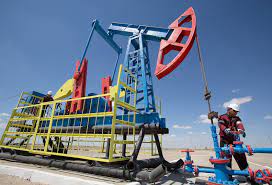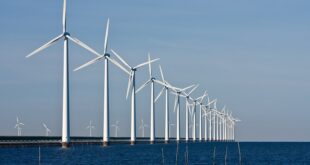When earlier this year, prices slumped following the series of bank collapses in the United States, their subsequent recovery was attributed to one factor: China.
The world’s largest oil and gas importer and Asia’s biggest economy, China, has become a staple in analysts’ oil and gas price forecasts. It is China that traders look to when they make their decisions on the oil market. It is also China that producers look to when they make their plans for the future.
And China is not alone. India has grown to be a factor to reckon with in oil and gas markets as well. With its more than 80-percent dependence on imports of crude to satisfy its domestic demand and a growing population and economy, India is being seen by some as the country that could replace China as the single most important driver of global oil demand in the not-too-distant future.
This year, China is seen to account for about half of global oil demand growth, taking it to a record high of almost 102 million barrels daily. That was according to the January oil market report by the International Energy Agency. In its two subsequent reports, the IEA maintained its stance that China’s post-Covid reopening will drive global oil demand significantly higher.
OPEC is also forecasting strong demand growth in China, revising it in its latest Monthly Oil Market Report to over 700,000 bpd from 590,000 bpd in the previous edition of the report.
But OPEC is also quite optimistic about India’s demand, expecting the subcontinent to become the leader in oil demand growth in less than 20 years and remain the leader until at least 2045.
Yet Asia is not just China and India. It is a lot of other countries, too, and their demand for oil and gas is also growing.
Indonesia’s demand for gasoline, for instance, is this year set to beat the record that it booked last year. The country is the largest importer of gasoline in Asia, with 2023 demand rates seen at 670,000 barrels daily.
Malaysia’s Petronas recently boasted of a successful bid round last year and scheduled the next one after awarding licenses for the exploration of nine oil and gas blocks. The country also reported a twofold increase in oil and gas discoveries last year.
Gas demand is also on the rise in Asia, despite last year’s surge in prices that made a lot of gas importers in the region reconsider their intentions of switching from coal to gas.
According to the Gas Exporting Countries Forum, demand for the fuel in ASEAN is set to more than double by 2050 from 2021 levels to 350 billion cu m as the shift away from coal continues despite the recent hiccup. This means that by 2050, the share of natural gas in the region is seen rising to 24 percent, replacing coal. The GECF cited Thailand, Malaysia, and Indonesia as major drivers of the projected demand growth.
Unsurprisingly, given current and expected oil and gas demand growth rates, China, India, and the rest of Asia are the focus of attention of both OPEC and other oil and gas producers. While demand appears to remain quite resilient in other parts of the world despite their efforts to reduce dependence on fossil fuels, Asia is undoubtedly the region everyone in the industry is watching.
It is also the region that will be mainly responsible for the continued tightening of global oil and gas supply, precisely because of these projected demand trends. Regions such as Europe and the U.S. will share this responsibility as they display demand resilience, but Asia will be the leading factor.
The industry has been warning about the tightening supply of oil and—with less certainty—gas for quite a long time now. Executives such as Aramco’s chief executive Amin Nasser, Exxon’s Darren Woods, and Shell’s Ben van Beurden have repeatedly noted that we are facing higher oil prices in the future because of insufficient supply.
However, the developed world appears to have been too focused on its quest to reduce carbon dioxide emissions to pay attention to which way the rest of the world was going. And the rest of the world is going in the direction of growing populations with growing energy needs. It also appears to feature a lot more pragmatic governments that prioritize access to energy over the type of energy.
What all this means is that demand for oil and gas appears set to be rising faster than supply growth. Normally, this would lead to higher prices, which would, in turn, dampen demand, eventually pushing prices lower. But that was when investment in new supply was adequate to demand patterns. Now, things may turn out very differently, with the higher-for-longer price scenario looking like the most likely one.

 Iran Energy News Oil, Gas, Petrochemical and Energy Field Specialized Channel
Iran Energy News Oil, Gas, Petrochemical and Energy Field Specialized Channel



